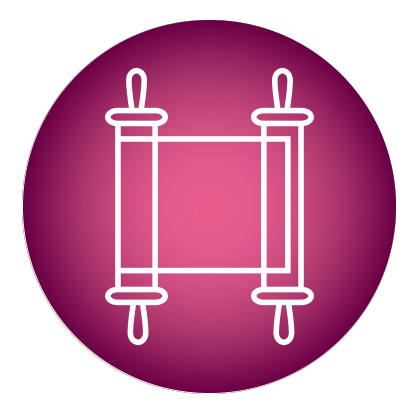Inside the Box

What we do, how we talk, and how we think must reflect the beauty and splendor of our innate G-dliness

“They should make an Aron of acacia wood… and cover it with pure gold from inside and out…” (Shemos 25:10–11)
The holiest article in the Mishkan was the Aron, which housed the Luchos. The Aron was made out of three boxes. The outermost box was made of pure gold. Inside it was placed a box of acacia wood. Then a second golden box was put inside the wooden one. The middle wooden box was thus covered with gold inside and out. So why not build one box of wood and plate it, inside and out, with gold? (Rabbi Y.Y. Jacobson, Yeshiva.net)
Her name was Nadya and she came for free. I’d just had my fourth child and I got a phone call from a neighborhood organization offering me three weeks’ worth of free cleaning help. Sure! Offer accepted, no questions asked, and I eagerly awaited her Thursday arrival.
Well, there’s a reason nothing’s free in this world. Nadya did know how to clean and scrub and organize. But she was also bossy, belligerent, and ultrasensitive.
Any suggestion I’d make prompted a long harangue, the gist of which was her way or the highway. Any request was met by her throwing up her hands and muttering darkly. By the time she’d leave, house gleaming, I’d be exhausted.
Gold is an inanimate metal, while wood is from the botanic world of growth. Wood doesn’t glitter like gold, and while it can be built into a magnificent structure, it can also, unlike gold, deteriorate and rot.
Kabbalah teaches that the psychological structure of every human being consists of three strata, one beneath the other.
The three boxes of the Aron represent these three human dimensions. The most inner box reflects the most inner dimension of the soul — “pure gold.” This is the Divine, spiritual essence of our identity, displaying a brilliant luster of sacredness.
Just as gold is inorganic and not subject to real change, so too the golden essence of the human soul cannot be altered, no matter how much abuse we are subjugated to.
Dialing the organization, I thanked them so much for their help, and hopefully asked if anyone else was available for the coming week.
“No, we’re swamped right now. But Nadya is an excellent cleaner.”
No doubt about that. But she also was an excellent complainer. The whole next week I debated long and hard whether putting up with Nadya was worth clean bathrooms. By the end of the week, I’d decided in the affirmative, but I had a new battle plan to deal with her.
The middle box, made of wood, reflects the more conscious personality of the human. Like wood, our feelings and attitudes go through many changes during our lives. We may develop and refine our “wooden” character so that it becomes exquisite and beautiful, or our personality may grow rotten and putrid.
Our “wooden” self usually vacillates between extremes. At times we may feel idealistic and spiritual, but at other times we find ourselves consumed by negative emotions.
Finally, the third and outer box, conspicuous for all to see, was made of pure gold. This reflects the Torah’s blueprint for the most external stratum of the human structure — man’s behavior.
Though we may feel our inner personalities to be torn and harboring darkness, we ought never allow ourselves to succumb to these forces and grant them permission to dictate our behavior. Even while our conscious moods may gravitate toward decadence, our essence remains pure gold.
This is Judaism’s fundamental code of human behavior. What you do, how you talk, and how you think must reflect the beauty and splendor of your innate G-dliness.
That Thursday, no matter what Nadya did, said, muttered, or grumbled, I smiled at her and said thank you.
When she poured bleach over my floors until I could barely breathe, I grinned in gratitude. When she complained that I had no newspaper to shine my windows, I gritted my teeth and smiled anyway.
Despite tension brewing and my stomach churning, I maintained a pleasant disposition and was effusive in my thanks. And was left with a gleaming house and a grinding headache.
I only had Nadya for three weeks, and I had to grin and bear it the whole time. But the life lesson lasted: By keeping my dark thoughts from influencing my behavior, I was left with shining results.
(Originally featured in Family First, Issue 779)
Oops! We could not locate your form.

